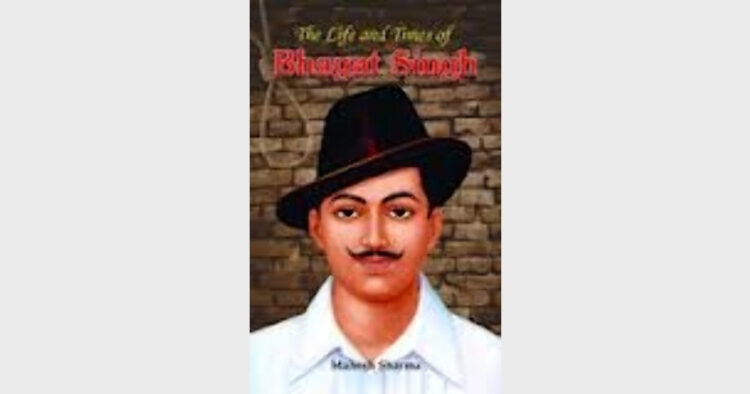The book ‘The Life and Times of Bhagat Singh’ is a biography of revolutionary Bhagat Singh, is set against the backdrop of an era when social beliefs and customs plagued the society and when Swami Dayananda Saraswati had laid the foundation of Arya Samaj to introduce reforms in the society.
A farmer named Sardar Arjun Singh lived in the village of Banga in Punjab. He had three sons – Kishan Singh, Ajit Singh and Swaran Singh. Arjun Singh was deeply impressed by Swami Dayanand’s views and got initiated into the Arya Samaj. He started opposing the policies of the British Government in India.
His eldest son Kishan Singh was an active social worker rather than political and brought 50 orphan children from Ferozpur and set up an orphanage. Gradually, he became a revolutionary and had 42 political cases filed against him. He was married to Vidyawati who too was caught in the fervour of revolution and patriotism. Her husband Kishan Singh, along with Lala Lajpat Rai, was sent to prison in Burma for their revolutionary activities.
Vidyawati gave birth to a son who was named Bhagat Singh. At the time of his birth, his father and his two uncles were in prison, but his birth proved auspicious as his father and uncles were released on the third day of his birth. Bhagat Singh had eight siblings but he was closest to his elder brother Jagat Singh. As luck would have it, Jagat Singh died of illness at age 11 and this so disturbed Bhagat Singh that he withdrew into his shell. Seeing him so depressed and withdrawn, his father moved out with his family to Navakot in the hope of making Bhagat Singh get over the loss of his brother.
Here he went to DAV School. In March 1919, when the Rowlatt Act was passed by the British to gain unlimited powers for themselves, many revolutionaries were put behind bars. Here the author describes the massacre of thousands of innocents at Jallianwala Bagh by General Dyer. Twelve-year old Bhagat Singh had run away to Amritsar with his friend at that time and he visited the site of massacre. He brought a bottle of soil from the site of massacre and offered a few jasmine buds in reverence to the soil in the bottle. He vowed, “…from now on we shall not get shot, but shoot the British who shed the blood of our innocent people. …I swear by the martyrs, I shall definitely avenge their death.”
Bhagat Singh then joined Mahatma Gandhi’s call for non-cooperation but who soon suspended the movement midway and this greatly upset Bhagat Singh, who along with his friend Yashpal took the pledge “to live for the country and die for the country.”
Bhagat Singh joined the National College, where he befriended Sukhdev. He joined the National Dramatic Club and participated in plays staged to arouse the spirit of nationalism among the people. At the Dwarkadas Library, he met Rajaram Shastri and they became close friends. On Rajaram’s advice, Bhagat Singh read French anarchist, Velan’s book Anarchism and Other Essays and liked it so much that he read it 64 times and decided to follow Velan’s path. Meanwhile, his father found a girl for him to marry but Bhagat Singh not wanting to marry, ran away from home as he did not desire to marry. His grandmother fell ill but he visited her only after six months.
Now began the Akali movement, which “was social, not political,” stresses the author. The main objective of the Movement was to free the gurudwaras from the hold of the mahants (heads) and bring them under public control. This impressed Bhagat Singh who joined the movement. He escaped to Kanpur when he heard of a conspiracy to arrest him. Here he met Chandra Shekhar Azad. Bhagat Singh constituted the Bharat Youth Association in 1926 with the aim of arousing the masses and generating the feeling of patriotism in them.
This is a poignant tale of a brave warrior told a bit differently from those already published so far.




















Comments